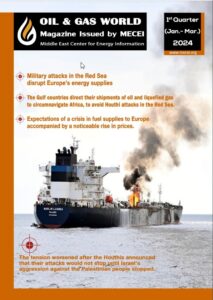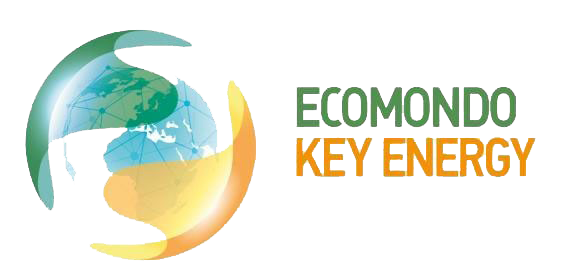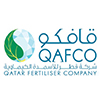- QatarEnergy selects Nakilat to own and operate 25 conventional LNG vessels
- The joint development of the Dorra field between Saudi Arabia and Kuwait is pending the demarcation of the border with Iran
- Minister of Energy reaffirms the UAE’s commitment to adopting clean energy and supporting the Paris Agreement
- The new Hassi Messaoud refinery enjoys the support of the government and President Tebboune
- Increasing electrical interconnection capacities to export electricity beyond borders
- Qatar Energy stops sending liquefied gas tankers through the Red Sea for security reasons
- The inauguration of the Duqm Refinery, the largest joint Gulf project in the refinery sector
- Saudi oil exports are faltering due to Houthi attacks on ships in the Red Sea and Gulf of Aden
- Algeria to host and chair the Gas Exporting Countries Forum summit (February 29 to March 2, 2024)
- Egypt Energy Conference and Exhibition 2024 gives a strong impetus to the global energy dialogue

Iraq’s oil production to boom over coming decades

Despite decades of war, civil unrest and a very recent, complete regime overhaul, Iraq has clamored its way up to become the world’s third largest oil exporter.
As foreign and national investments are rising, the country is expected to embark on a rapid economic expansion path that will dramatically reshape the future of global energy markets.
With increased exploration activity, construction and a growing community of service companies entering the multiple stages of the oil and gas supply chain, the country’s oil production is expected to soar.
National oil production growth is projected to account for approximately 45% of the anticipated growth in global output to 2035, based on the International Energy Agency’s (IEA) annual World Energy Outlook Special Report which focused on Iraq this year.
“Faced with the prospect of rising oil consumption we have to ask where the additional oil supply is coming from,” said Maria van der Hoeven, executive director of the IEA at a press conference which launched the organization’s IEA Report. “And I can assure you it’s very tough to answer this question without Iraq.”
The country is estimated to have the fifth largest proven oil reserves in the world, but this could easily changes in coming years.
“Iraq is one of the most unexplored countries in the world, and without exploration activity for decades,” said Dr. Fatih Birol, the IEA’s chief economist and primary author of the report. “On top of that, both the oil and gas production costs are among the lowest in the world,” he continued. Low production costs, strong well productivity and high quality oil will continue to attract more investors into the Iraq market.
The Iraqi federal government plans to invest US $14 billion into the country’s upstream sector in 2013, compared to the $7 billion it invested in 2012, and the $3 billion in 2011.
The IEA report projects that Iraq crude production will double to 6.1 million barrels per day (bpd) by 2020. also the report suggests that Iraq could gain as much as $5 trillion in revenues from exports between 2012 and 2035, an average of $200 billion per year.
Such expansive growth will open the floodgates for investment into other segments within Iraq’s economy and society – particularly its infrastructure, transportation, education, and communications systems. This in itself would provide new economic possibilities for Iraq’s future generations and possibly reshape its economy to become less dependent on oil exports, which currently account for more than 75% of GDP.
Oil production fell from 3.5 million bpd, before the outbreak of the Iran-Iraq war, to just under 1.0 million bpd in the early 1980s, only to climb slowly to under 3.0 million bpd before the outbreak of the First Gulf War in 1991 when production dropped to less than 0.5 million bpd. Oil production climbed again until the Iraq war began in 2003, but the impact of this was relatively smaller and production has climbed back-up to over 3.0 million bpd, an increase of over 40% over the last five years.
But Iraq still has a long way to go. The wars which blunted Iraq’s oil production in the past also destroyed its society, economy and infrastructure. Besides, the security costs are a problem for many investors and a deterrent for others. Transportation can often turn into a logistical nightmare and power generation and delivery is unreliable at best.
The IEA expects that Iraq will need a cumulative energy investment of over $530 billion in its central projection scenario, the equivalent of just over 10% of projected revenue from oil and gas exports. This investment will be most crucial throughout the current decade but could be delayed by the pace of modernization within the Iraqi legal framework.
“Developments in Iraq’s energy sector are critical for the country’s prospects and also for the health of the global economy.” said Dr. Birol. “But success is not assured, and failure to achieve the anticipated increase in Iraq’s oil supply would put global oil markets on course for troubled waters.”
The majority of Iraq’s oil production increases will be driven by super-giant fields in the south, particularly around the West Qurna and Rumaila fields, but attention is also switching over to the Kurdistan area in the north of Iraq, which has become one of the most explored regions in the world.
The IEA predicts that Iraq’s undiscovered resources come in at slightly under the 215 billion barrels which the country’s Ministry of Oil projected in 2010. This means that Iraq has produced less than 15% of its ultimately recoverable oil resources.









